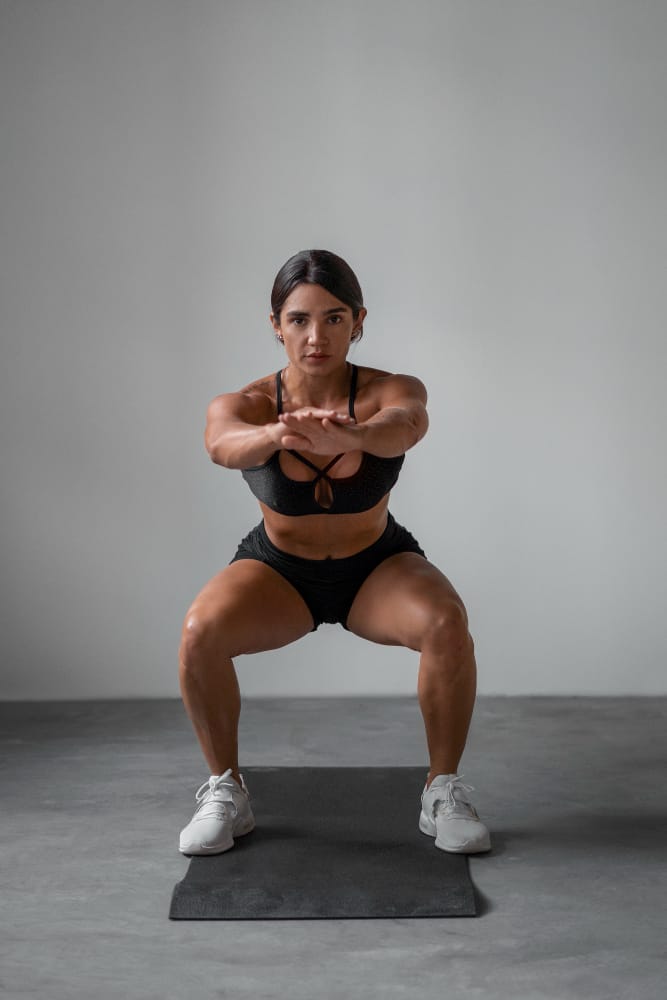FREE SHIPPING OVER $50
If You’re Over 45 and Can’t Pass These 4 Strength Tests, Your Mobility May Be at Risk

The years following 45 mark a subtle but significant shift in the aging process. We often stop chasing peak performance and start focusing on something far more valuable: functional strength. This is the capacity to perform daily tasks with ease and maintain full independence—the ability to keep living life on your own terms well into your later decades. Unfortunately, functional decline rarely feels dramatic; it creeps up on you, masquerading as simple stiffness or tiredness.
The good news is that preventing this decline is entirely achievable. However, you cannot fix what you don’t measure. Forget the amount of weight you can lift in the gym; experts agree that just four specific, low-tech strength tests serve as highly accurate predictors of your future mobility risk and overall longevity. If you cannot successfully complete these simple movements, you receive a clear, urgent warning that your fundamental fitness is lagging, and it is time to take immediate action to protect your freedom of movement.
Why Functional Strength Matters After 45
For individuals over 45, the goal of fitness shifts from building maximum muscle mass to preserving maximum capacity. Functional strength refers to the muscle control, balance, and agility needed for real-world movements, such as quickly changing direction, climbing stairs without assistance, or catching yourself if you stumble.
This is the true measure of over 45 fitness. If your functional lower body strength is poor, simple actions like getting out of a chair or navigating uneven ground become taxing. Poor balance directly increases your fall risk, which is one of the greatest threats to longevity and independence. By prioritizing exercises that integrate stability, power, and coordination, you effectively fortify your body against the inevitable bumps and challenges of the aging process. These four tests specifically target these foundational pillars of movement.
Test Your Independence: The 4 Key Mobility Assessments
These four assessments require no special equipment and offer a powerful window into your body’s true functional health. We will detail the test, explain the passing benchmark, and, crucially, reveal why success or failure is so critical for your long-term mobility.
1. The Single-Leg Stand: The Balance Indicator
The Test: Stand next to a wall or sturdy surface for light assistance if necessary. Lift one foot off the ground (you can bend your knee or rest the raised foot against your ankle, but the lifted foot must not be supported). Start a timer as soon as the foot is fully airborne and stop when you have to put the foot down, touch the wall, or shift your weight significantly. Repeat on the other side.
The Benchmark for Longevity: The ability to hold the pose for 10 seconds or more.
The Mobility Risk: Balance is an accurate proxy for neurological health. Studies have shown that individuals over 50 who cannot hold a ten-second single-leg stance face a significantly higher risk of all-cause mortality (death from any cause) within the next decade. If you struggle to maintain this pose, it signals poor core stability and reduced neural-muscular communication, drastically increasing your fall risk—the single most common cause of fatal injury for older adults.
How to Improve: Start with the “Stork Stance” by standing on one leg while brushing your teeth or waiting for water to boil. Advance by closing your eyes, which forces your internal balance systems to work harder.
2. The 30-Second Chair Stand: The Lower Body Power Test
The Test: Find a standard dining chair without arms. Sit with your back straight and your feet flat on the floor, hip-width apart. Cross your arms over your chest. Start a timer and count how many times you can stand up fully and sit back down safely within 30 seconds. Ensure you stand all the way up without using your hands for propulsion.
The Benchmark for Longevity: While the required number varies slightly by age and sex, a score below 10 repetitions for both men and women over 45 warrants attention, and a score below 8 is a major warning sign for loss of independence.
The Mobility Risk: This movement directly measures your lower body strength and power—the key ingredient for walking, climbing stairs, and recovering from stumbles. The Sit-to-Stand is the ultimate gauge of how easily you can transition from sitting to walking. A low score predicts future difficulty with daily activities and is strongly associated with frailty and the need for assistive devices down the road.
How to Improve: Practice unassisted squats daily. Start by using a tall surface and gradually move to lower chairs. Perform 3 sets of 10 slow, controlled chair stands several times a week.
3. The Grip Strength Check: The Whole-Body Health Proxy
The Test: While a professional test uses a dynamometer, you can check your relative strength by seeing how easily you can open a stubborn jar or carry two heavy grocery bags (around 10-15 pounds each) for an extended distance without pain or dropping them. Another simple proxy: Squeeze a stress ball or a rolled-up towel as hard as you can for 30 seconds. Repeat 3 times.
The Benchmark for Longevity: You should be able to consistently perform activities that require a firm, sustained grip without acute pain or premature fatigue. You should be able to carry a significant load for 60 seconds.
The Mobility Risk: Grip strength sounds isolated, but it is one of the most reliable, non-invasive predictors of all-cause mortality, cardiovascular health, and bone mineral density across all age groups. Scientists believe low grip strength is a proxy for overall muscle quality, and a rapid decline in grip force is considered an early marker of frailty and systemic physical weakness.
How to Improve: Incorporate farmer’s carries (walking while holding heavy dumbbells or kettlebells) and dedicate time to specific hand exercises like ball squeezes or towel wringing to build forearm and grip endurance.
4. The Timed Up and Go (TUG) Test: The Real-World Mobility Gauge
The Test: Place a marker (like a cone or a piece of tape) on the floor 10 feet (3 meters) from the front of your armless chair. Sit down fully. When the timer starts, you must stand up, walk quickly but safely to the marker, turn around, walk back to the chair, and sit down. Stop the timer when your bottom touches the seat.
The Benchmark for Longevity: Completion in 10 seconds or less.
The Mobility Risk: The TUG test integrates all elements of mobility: rising from a chair, stable gait, and rapid directional change. A score significantly over 12 seconds signals a significantly elevated mobility risk and fall risk because it demonstrates impaired dynamic balance and slow movement initiation—the two components that often fail when you need to react quickly to a trip or slip in the real world.
How to Improve: Practice standing up from the chair quickly, focus on making a clean, swift turn at the halfway point, and incorporate exercises that practice weight shifting and knee drive, like high marching in place.
What Happens If You Fail? Understanding Your Mobility Risk
If you discover you cannot pass one or more of these 4 strength tests, your mobility risk is measurably elevated. This doesn’t mean you are destined for future immobility; it means the aging process is moving faster than your training is compensating.
A poor score is a clear indicator of low physiological reserve. This means your body is using nearly all its capacity just to get through daily life. If you encounter an unexpected event—a fall, a sudden illness, or even extended bed rest—your body lacks the reserve capacity to recover quickly, increasing your risk of hospital stays, chronic pain, and eventually, loss of independence. The good news is that muscle and neurological function are highly plastic, and consistent effort can reverse this decline at any age.
Final Thoughts
Take the warnings from these simple habits seriously, but view them as motivation, not defeat. Success in the over 45 fitness realm is defined by maintaining functional strength and protecting your longevity. Focus your weekly routine on the specific weaknesses revealed by these tests. Incorporate a little bit of balance work every day, train your lower body strength twice a week, and consciously use your hands and grip muscles. By prioritizing these foundational movements, you are actively investing in the freedom and independence that define a high quality of life for decades to come.
Related Articles
- Over 40? Trainers Say These 6 Exercises Are Non-Negotiable for Strength and Longevity
- This Forgotten Bicep Trick From the Golden Era Builds Sleeve-Splitting Arms Fast
- This Bodyweight Move Builds a Stronger Backside Than Deadlifts—And Boosts Flexibility Too
- These 5 Pelvic Floor Exercises Can Transform Your Core, Bladder, and Bedroom—And Most Men Have No Idea
- Want Bigger Glutes and Quads? Science Reveals the Exact Rep Ranges That Actually Work



